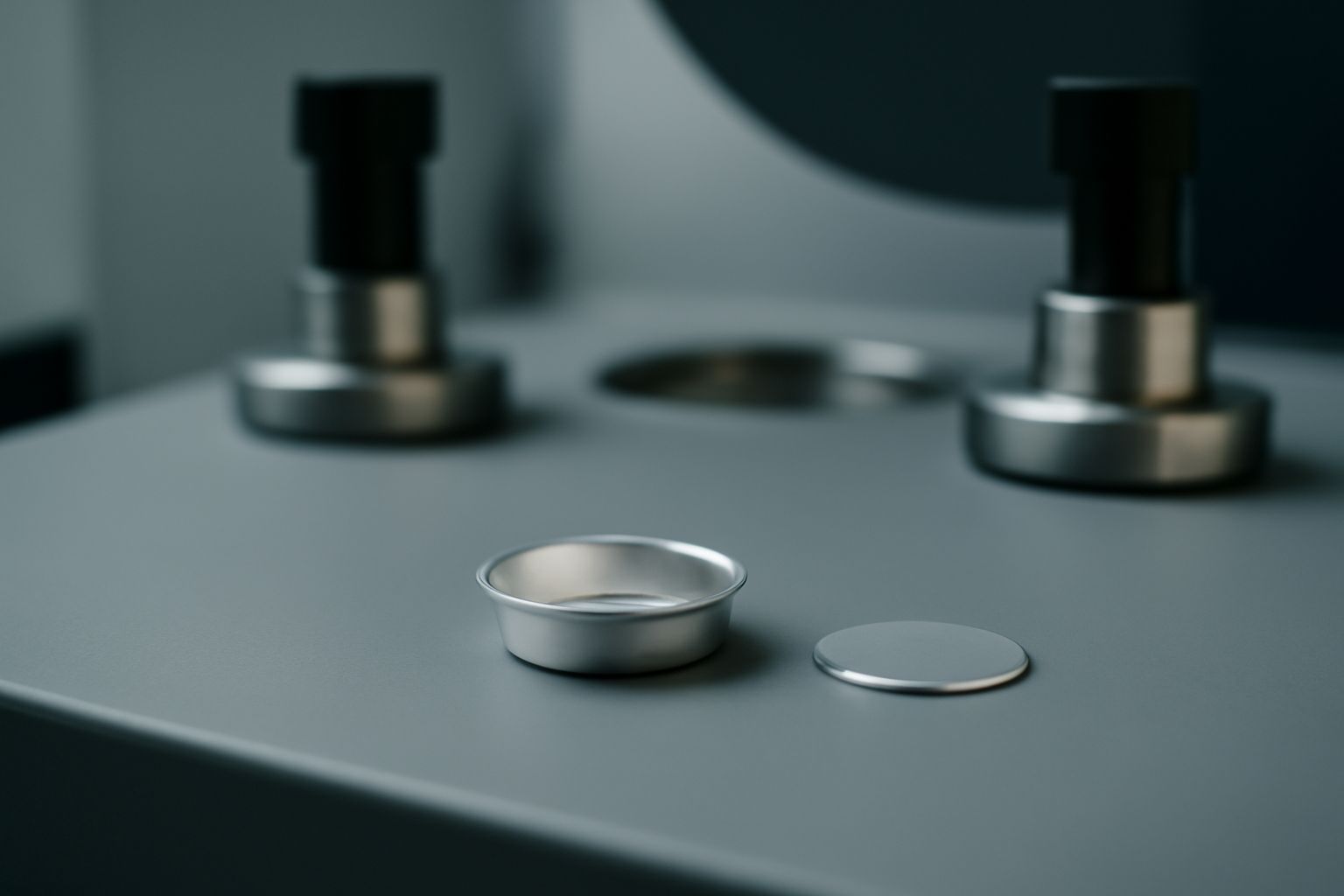Your cart is empty.
shop now
Your cart is empty.
shop now
Imprecise pans can distort thermal analysis results and compromise polymer research. Many labs struggle with signal drift or poor fits due to ignoring the technical details of high-purity aluminum pans.
The technical specifications of high-purity aluminum pans for polymer DSC include ≥99.99% material purity, tight dimensional tolerances, and ratings up to 600°C and 2 atm. Correct sealing mechanisms ensure accurate, repeatable thermal data.

I always insist on reviewing the full datasheet and specifications when sourcing new pans. Understanding key technical factors for high-purity aluminum pans prevents errors and ensures consistent results in DSC analysis of polymers.
Low-purity aluminum pans introduce contamination and unstable baselines. I have seen poorly sourced pans cause extra peaks or drift, wasting entire batches of polymer samples.
High-purity aluminum pans at 99.99% or greater purity reduce background noise, provide chemical inertness, and enable detection of weak transitions in polymer DSC analysis.
| Aluminum Purity (%) | Impact on Results | Best For | Noticeable Problems | Reference |
|---|---|---|---|---|
| 99.5% | Some baseline shift, oxidation risk | Basic samples only | Signal noise, artifact peaks | ScienceDirect |
| 99.99% | Stable, low noise baseline | Polymer transitions, blends | None in clean runs | Aluminum |
I check purity certificates before new orders. Only high-purity aluminum ensures you get dependable measurements for detailed polymer research or QA work.
Pans that do not match required sizes can stick in DSC trays or lead to uneven heating. Overlooked tolerances cause data scatter and disrupt laboratory routines.
Most high-purity aluminum pans for polymer DSC must have diameter, height, and wall thickness tolerances within ±0.01mm to ensure perfect fit, contact, and reproducibility.
| Dimension | Typical Value | Tolerance | Why It Matters | Reference |
|---|---|---|---|---|
| Outer Diameter | 6.4–6.7 mm | ±0.01 mm | Ensures fit into DSC tray | Instrument manual |
| Height | 2.2–2.5 mm | ±0.01 mm | Keeps samples at reference level | Supplier specs |
| Wall Thickness | 0.15–0.18 mm | ±0.01 mm | Controls heat transfer | ScienceDirect |
Before each batch, I spot-check pan samples with a digital caliper. This small habit saves me from data drift or failed tests later in large polymer projects.
Exceeding pan ratings can warp or rupture aluminum pans, damaging samples, sensors, or even the DSC device. Many instrument shutdowns trace back to neglected temp and pressure limits.
High-purity aluminum pans for polymer DSC generally support temperatures up to 600°C and internal pressures up to 2 atm, but this can vary with lid type and sample behavior.
| Pan Type | Max Temp (°C) | Max Pressure (atm) | Limitations | Supplier/Brochure |
|---|---|---|---|---|
| Standard aluminum | 600 | 1–1.5 | No hermetic sealing | Instrument catalog |
| Hermetic aluminum | 580–600 | 1.8–2 | Press fit may affect exact value | ScienceDirect |
I review both temperature profile and expected sample behavior before runs. Using pans inside certified thresholds keeps every instrument safe and test result valid for publication or QA use.
Poor sealing causes sample loss, baseline jumps, or uncontrollable gas buildup. Incorrect lid choice often means uncontrolled evaporation or contamination, ruining DSC tests.
Sealing types include flat lids, hermetic (press-fit or crimped), and vented. Hermetic seals prevent gas loss and work best for volatiles. Flat lids are for routine analysis. Vented pans control pressure for decomposition measurements.
| Seal Type | Use Scenario | Pro | Con | Reference |
|---|---|---|---|---|
| Flat lid | Standard polymer screening | Easy use | Poor for volatiles | Instrument manual |
| Hermetic/press-fit | Volatile or sensitive samples | No sample loss | Needs special crimp tool | ScienceDirect |
| Vented lid | Decomposition, TGA-DSC | Releases gas control | Possible small mass loss | Hermetic seal |
When I prepare a polymer sample series, I keep at least two lid options in stock. A quick seal test with a standard ensures the pan is ready for the full batch or project.
Understanding purity, dimensions, ratings, and sealing lets labs select high-purity aluminum pans that produce the most consistent and reliable DSC results for every polymer research or QA need.
Contact technical support: info@redthermo.com